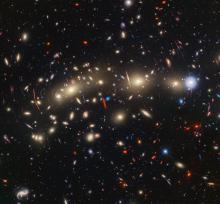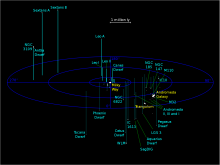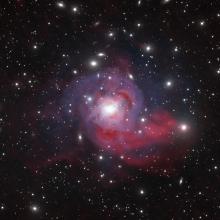Listen to today's episode of StarDate on the web the same day it airs in high-quality streaming audio without any extra ads or announcements. Choose a $8 one-month pass, or listen every day for a year for just $30.
You are here
Virgo Cluster
Galaxies don’t like to be alone. They congregate in clusters — collections of a few dozen to a few thousand of them, all bound by their mutual gravitational pull. Our own galaxy, the Milky Way, belongs to a small cluster known as the Local Group.
The nearest big cluster is about 50 million light-years away. It’s in the constellation Virgo, so it’s known as the Virgo Cluster. It contains a couple of thousand galaxies.
Most of them are puffballs — dwarf galaxies that are only a fraction the size and mass of the Milky Way. But a few are giants — they’re the size of the Milky Way or bigger, and some may contain dozens of times as many stars as the Milky Way.
The Virgo Cluster is at the center of a much larger collection of galaxies: the Virgo Supercluster. It includes several clusters that move through space as a unit, tied together by gravity. Membership includes the Local Group, which is on the supercluster’s outskirts. We’re becoming more tightly integrated into the supercluster, though, as the Local Group is pulled toward the Virgo Cluster.
And it’s easy to spot the cluster’s location right now. It’s high in the east and southeast at nightfall. It’s roughly between the planet Jupiter, which is the brightest object in the sky at that hour, and the tail of Leo, the lion. Binoculars reveal a few of the galaxies as hazy smudges of light, while a small telescope brings several galaxies into sharper view.
More about the Virgo Cluster tomorrow.
Script by Damond Benningfield





